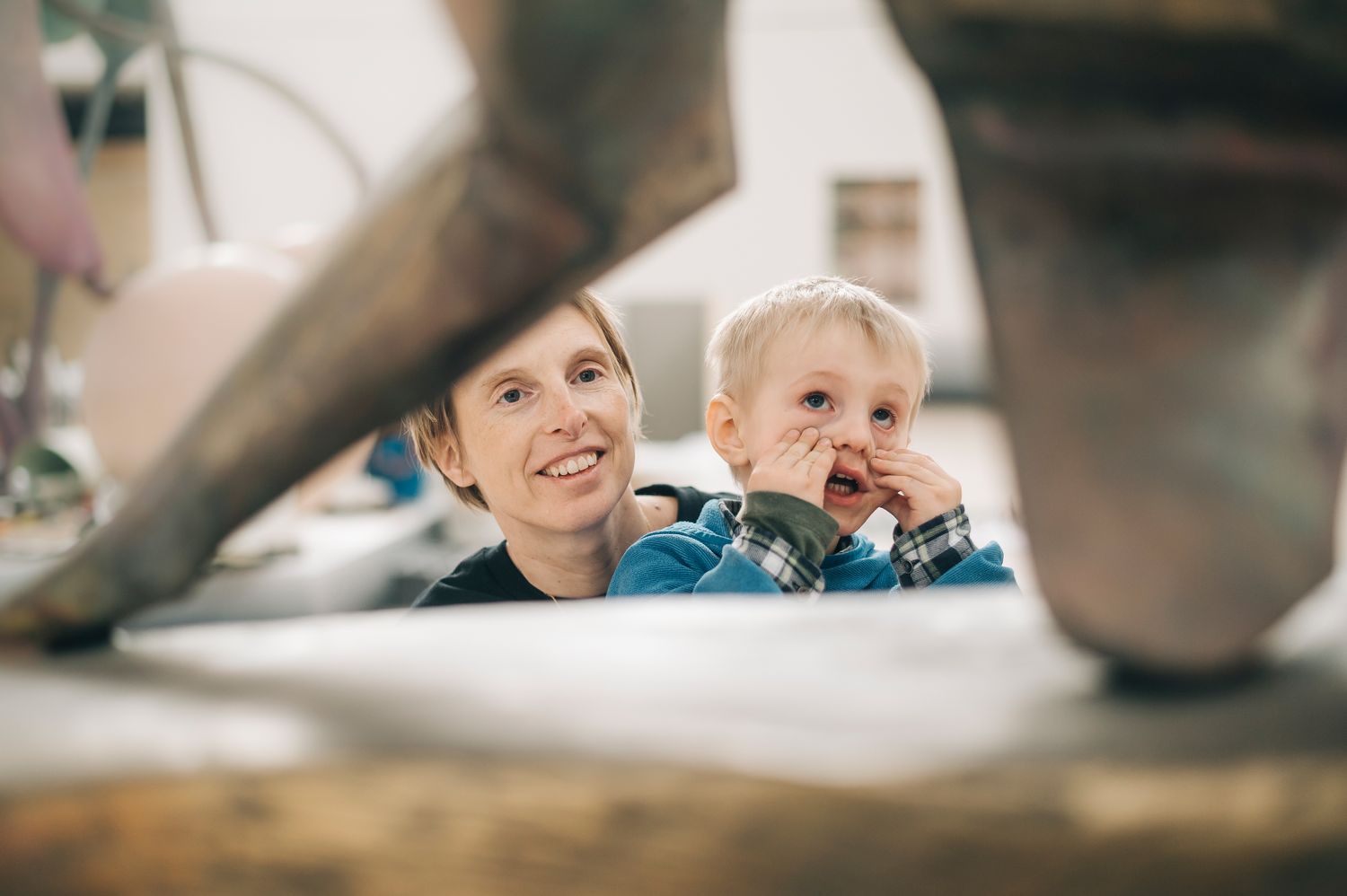
The bird mother
Is it OK to have a child? Is it OK to make art? Or is the footprint they leave destroying the planet? In her second column, Camille Henrot explores one of the ethical dilemmas of our times.
By Camille Henrot (art and text), Antje Stahl (editor) and Rafael Heygster (photography), 24.04.2021
Journalismus, der Ihnen hilft, Entscheidungen zu treffen. Und der das Gemeinsame stärkt: die Freiheit, den Rechtsstaat, die Demokratie. Lernen Sie uns jetzt 21 Tage lang kostenlos und unverbindlich kennen:
English Deutsch
Over the past few weeks I’ve been busy installing the exhibition «Mother Tongue» at the Kestner Gesellschaft in Hannover, Germany. For the first time I am showing a large body of work from a new series of paintings and drawings about motherhood titled «Wet Job», «System of Attachment» and «Soon». In addition, in the centre of the exhibition space, the curator Julika Bosch and I decided to place the sculpture titled «3, 2, 1».
I made the sculpture at the Kunstgiesserei St. Gallen, which was kind enough to invite me for a residency last summer. Mauro, Iddu and I had just left New York as my visa was about to expire and the city, like so many others, was forced into a full lockdown. We travelled to Zurich, where Mauro and his family looked after Iddu while I worked with a wonderful crew in St. Gallen.
It probably goes without saying that being separated from her child makes a so-called working mom feel conflicted – she’s happy to find the time to immerse herself in her work, yet she also feels guilty for not being able to spend time with her kid. When it comes to motherhood, feelings of public and private responsibility collide. This conflict is compounded by a mother’s fear of losing the world she grew up in, especially when she is constantly reminded of its imminent destruction. According to calculations made by scientists Seth Wynes and Kimberly Nicholas, global carbon emissions would be dramatically reduced if people not only ate less meat and took fewer transatlantic flights but also if they had fewer children.
In an essay titled «Is it OK to have a child?» (which I paraphrased at the outset), Meehan Crist critiques mathematical models that purport to have a solution to global warming. Crist claims, and rightly so, that we need to shift our focus from individual responsibility (i. e. carbon footprints) towards collective actors in the political and economic sphere. Crist also shows how major players, specifically the fossil fuel industry, «carefully crafted and drilled into [our heads]» the narrative that we are all personally responsible for the climate crisis.
Since 2005, BP has apparently spent around 100 million dollars a year for a US media campaign that promotes online calculators for working out your own carbon footprint and toolkits for schoolchildren to raise their awareness of how they are wasting precious energy (and not BP).
Most depressing is the fact that BP sponsors museums. Crist recounts how she herself was invited to give a lecture at the British Museum’s BP Lecture Theatre. But while more and more artists and activists have been pushing back against such sponsorships in recent years, we all still feel extremely guilty as far as our personal carbon footprint is concerned. And the art world is now seriously and openly grappling with the question: «Is it OK to make art?»
I am still searching for satisfactory answers to these conundrums myself. I do not think they will be resolved anytime soon. This is one reason I tried to embody aspects of the issue in the «3, 2, 1» sculpture. Producing art inevitably results in waste, bits of material that get cut off or otherwise thrown out. During the making of the sculpture in St. Gallen, I collected this material and rearranged it, like birds do, into a nest on which the sculpture is sitting.
Only recently, when we moved to Berlin, did I discover the word «Rabenmutter». The expression compares a bad mother to a raven who kicks out her offspring too early and neglects them. I was very surprised that the word does not associate the mother with the strength that the bird represents in mythology: the raven is a super clever animal that serves as a messenger for gods and saints, a caretaker and truth teller in times of crises.
My mother worked as an artist and as a bird taxidermist for the dioramas in the natural history museum in Paris. She could imitate the birds’ voices, and she prepared them for an eternal stuffed life after their death. In our apartment in Paris there was a room filled with all sorts of metallic wire, stuffing material, feathers, dried plants and animal corpses. There was also a drawer full of fake eyes in different colours. I wasn’t allowed to play there. When, nevertheless, I did one day, all the eyes fell out and rolled all over the floor.
At the 55th Venice Biennale, French artist Camille Henrot was awarded the Silver Lion for her video «Grosse Fatigue», among others. Since she gave birth to her son, she has both intellectually and artistically been exploring the ambivalent feelings associated with so-called motherhood. She, her partner, the Swiss composer Mauro Hertig, and her son Iddu are based in Berlin.